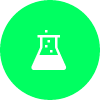Reptiles
 |
| Source : wikicommons |
Reptiles are tetrapod animals in the class Reptilia, comprising today's turtles, crocodilians, snakes, amphisbaenians, lizards, tuatara, and their extinct relatives. The study of these traditional reptile orders, historically combined with that of modern amphibians, is called herpetology.
The earliest known proto-reptiles originated around 312 million years ago during the Carboniferous period, having evolved from advanced reptiliomorph tetrapods that became increasingly adapted to life on dry land. Some early examples include the lizard-like Hylonomus and Casineria. In addition to the living reptiles, there are many diverse groups that are now extinct, in some cases due to mass extinction events. In particular, the Cretaceous–Paleogene extinction event wiped out the pterosaurs, plesiosaurs, ornithischians, and sauropods, alongside many species of theropods, crocodyliforms, and squamates.
Most reptiles have a continuous external covering of epidermal scales. Reptile scales contain a unique type of keratin called beta keratin; the scales and interscalar skin also contain alpha keratin, which is a trait shared with other vertebrates. Keratin is the main component of reptilian scales. Scales may be very small, as in the microscopic tubercular scales of dwarf geckos (Sphaerodactylus), or relatively large, as in the body scales of many groups of lizards and snakes. The largest scales are the scutes covering the shell of a turtle or the plates of a crocodile.







Comments
Post a Comment
Help us by feed back and add and your sujection to us. .